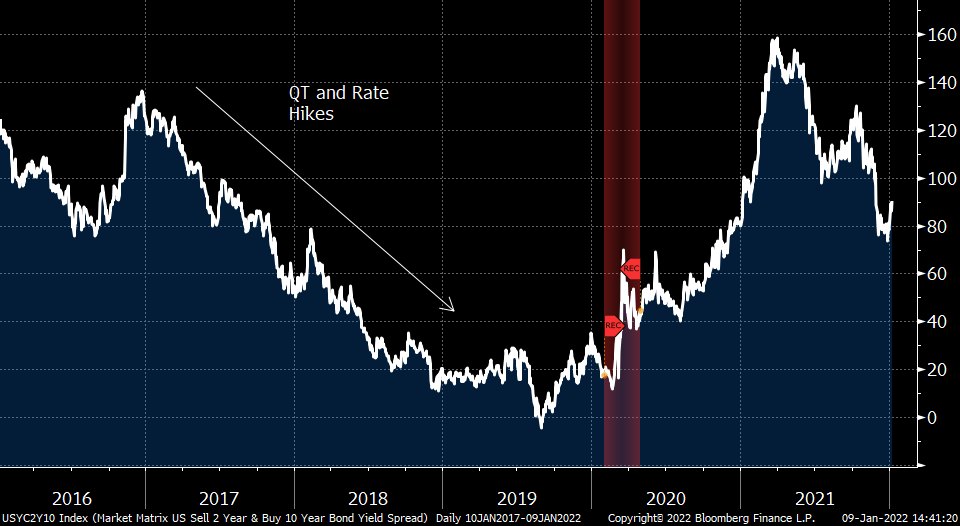Jan 10, 2022
How can the Fed engineer a soft landing?
By Larry Berman
Larry Berman's Market Outlook
The markets did not like the hawkish Fed speak last week. Bond yield ripped higher and are about to break key yield support in the 10-year. The market narrative is debating the 2017-2018 dual policy of rate hikes at the same time they were reducing the size of the balance sheet known as quantitative tightening (QT). But after the equity volatility in 2018 and Powell making the mistake of saying the balance sheet run-off was on autopilot, he had to pivot back to QE policy and rate cutting. That was already happening before COVID struck the world in early 2020 and ever since.

With inflation pressure proving to be more than “transitory” and the FOMC openly telling us they are behind the curve, they need to go faster. Quality equities are just beginning to react. When I say quality, I mean large cap tech. The F(M)ANGMAN (Facebook now Meta). The weaker (earnings) speculative technology names that we see in the great ARK ETFs have been correcting their bubble like valuations for most of 2021.
When we look at growth and inflation, the two key macro drivers of earnings, the yield curve is and always will be a key input. Credit expansion and contraction is a huge factor in the business cycle. The narrative around the FOMC manipulation of the cost on money (the yield curve) is significant. Historically, a flattening yield curve suggests weak growth and inflation. That’s bullish for longer duration assets. The ARK ETFs are mostly long duration assets. They are not big dividend stable earnings companies. Even the great TSLA does not make much money selling cars, it’s still green credits where most of the positive earnings are coming from. Something like Bitcoin is the longest duration asset as it has no revenue or dividend. Duration is a measure of discounted cash flows. How long will it take to get you money back from profits or payments (dividend or interest)? A flattening yield curve supports lower duration assets more than economically sensitive assets that need a strong economy to generate earnings.

So the real conversation at the Dec FOMC and the upcoming Jan. 26 FOMC is how to they keep the yield curve steep to give the impression the economy is strong. The more aggressively they raise rates (Jan Hatzius, Goldman Sachs Chief Economist and head of research) is calling for four rate hikes in 2022 (three are expected, a bit more than two are priced in), which suggest they could start in January, but no later than March. That would likely flatten the curve. If they focus on QT (reducing balance sheet assets), pressure on longer rates would keep the curve steeper. The steeper the curve the more value type stocks beat growth stocks. The flatter the curve, the more growth stocks likely beat value stocks. If they are serious about fighting inflation, they likely need a bit of both, in which cash 2022 could look a lot like 2018 from an equity market volatility standpoint.
How much of the 2020 and 2021 global stimulus drove the massive rise in earnings? What happens when that fiscal and monetary cliffs hits the earnings cycle in 2022? Earnings expectations are very strong for the next year, we think that is a high hurdle.
Earnings season starts this week and we should be OK for the next few weeks with rising earnings expectations, but depending on how hawkish the Fed will be (Jan. 26), should define how volatile markets will be this year. This time around, it will be harder for the FOMC and other central banks to engineer a soft landing given inflation challenges.
Follow Larry online:
Twitter: @LarryBermanETF
YouTube: Larry Berman Official
LinkedIn Group: ETF Capital Management
Facebook: ETF Capital Management
Web: www.etfcm.com







